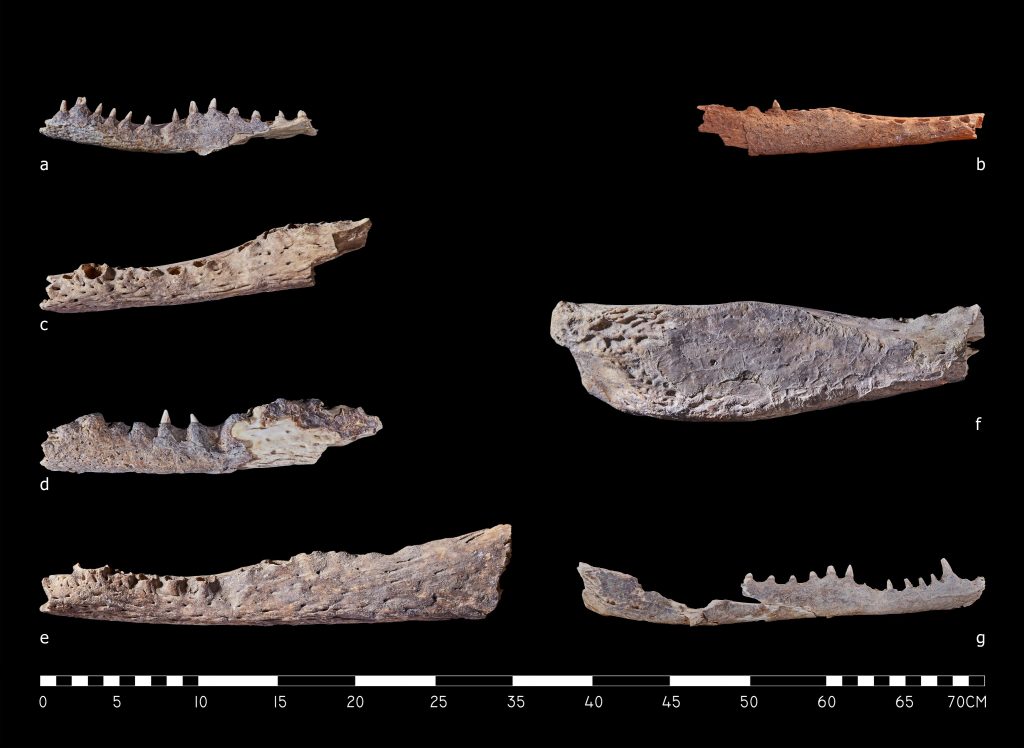Archaeologists have discovered crocodile heads buried in an ancient necropolis. While it’s well known that ancient Egyptians were partial to mummifying obscure animals and placing them in tombs, the researchers say this is the first known case of reptile remains within the tombs of people.
In a study, an international team of researchers details the discovery of nine cloth-wrapped croc skulls found among the ruins of the Theban Necropolis in the valley of North Asasif near Luxor on the west bank of the Nile.
Many mummified crocodiles have been discovered at ancient Egyptian sites, not to mention the millions of mummified dogs, cats, baboons, lions, horses, goats, snakes, and birds. However, this is believed to be the first time the un-mummified heads of crocodiles have been found within the context of a human burial, the researchers say.
“A thorough analysis within one of the rubble damps provided proof that the crocodile heads had been primarily placed in burial chambers. Thus, they must have been put there during funeral ceremonies four thousand years ago, at the period of the Middle Kingdom,” Dr Patryk Chudzik of the Polish Centre of Mediterranean Archaeology, explained in a statement.

Fragments of mandibles from the crocodile remains. Image credit: PCMA UW
“In the face of thousands of crocodile mummies found throughout Egypt, the discovery of unmummified remains of these riverine creatures, restricted to the head and skin, is quite extraordinary. In fact, remains of sacred reptiles were buried in specially prepared catacombs,” added Dr Chudzik.
A closer look at the remains showed they were young Nile crocodiles (Crocodylus niloticus) measuring up to 5 meters (16.4 feet) from snout to tail. This species is the largest and most dangerous of all the crocodilians in the continent and can be found throughout much of sub-Saharan Africa.
First excavated in 1922, this necropolis features two mortuary complexes: one desiccated to Chancellor Khety, a high-ranking official in the court of Mentuhotep II (2055-2022 BCE), and another attributed to a vizier at the pharaoh’s court.
This pair was clearly of high social status, indicating that the crocodile heads buried alongside them were something of prized possession in this period of Egyptian history. The researchers doubt, however, that the crocodiles have anything to do with the cult of Sobek, the ancient Egyptian deity that was depicted as a human with a crocodile head.
As for why the crocodile heads were buried with these people, it’s anyone’s guess. Whatever the meaning though, it’s obvious that the ancient Egyptians clearly had a lot of time for these magnificent scaly beasts.
The study was published in April 2022 in the Journal of African Archaeology.
Source Link: Crocodile Heads Found In Ancient Egyptian Tombs Are A First Of Their Kind